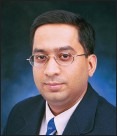
Upon opening this issue, in the journal, I regret that the first thing readers will see is a retraction of two papers (one due to plagiarism and the other due to duplicate publication) that we published in the previous issue of the journal. One was copied from a dissertation and the other was submitted to two journals and was published in both, one of them being JISP.
Plagiarism occurs when one author copies someone else's writing or ideas without sufficient acknowledgment. The Committee on Publication Ethics (COPE), for example, defines plagiarism (from the Latin ‘plagiare’, ‘to kidnap’; ‘plagiarius’, ‘kidnapper’) as “unattributed use of large portions of text and/or data, presented as if they were by the plagiarist.”[1] Plagiarism is a serious breach of research ethics that, if committed intentionally, is considered research misconduct. Plagiarism in its most serious form is the passing off of all, or large sections, of another author's published paper/work as one's original work. It violates the literary rights of the individuals who are plagiarized, and the property rights of copyright holders.
Redundant or duplicate publication is defined by the Committee on Publication Ethics as occurring “when two or more papers without full cross reference share the same hypothesis, data, discussion points, or conclusion,”[1] in other words, a paper that overlaps substantially with one published or submitted elsewhere. JISP strongly discourages these practices and will definitely act against them. In both instances, sanctions may be applied, after affording the author(s) due process. These sanctions may prohibit an author or authors from submitting to the journal for a specified period of time. The article at issue may also be removed from the publication and/or a notice of retraction posted for readers in the journal.
Plagiarism is more than claiming another's ideas or words as original to one's self. If an author uses words or ideas from his/ her own previously published article without citing that article, it is self-plagiarism. Self-plagiarism ranges from duplicate publication to publishing the same article in multiple journals or reusing sections such as “Methods” or “Results” from previous publications.[2] If an author feels that duplicate publication in a second journal is appropriate to reach all of the audiences for an article, he should acquire permission from both editors and clearly indicate when and where the article was published previously.[3]
The publication process serves an essential role in assessing the validity of science and disseminating information to clinicians. Publication is the final step in the peer review process and represents a formal stamp of approval of any scientific endeavour. In todays “publish or perish scenario” publications are essential for securing jobs and promotions. As such, editors have a prime duty to their readers to maintain the integrity of the scientific record. Therefore, we follow good practice guidelines, such as those published by the International Committee of Medical Journal Editors (ICMJE)[4] or the Council of Science Editors (CSE)[5] or accessing advise from the Committee on Publication Ethics (COPE).[1]
Our reviews, research articles and case-reports/series, together with other material, should be written in a way that offers fresh thinking. In discussions, critiques and reviews of literature, authors should indicate clearly their own views and differentiate them from the views and opinions of the authors they cite. The literature is vast and it is unusual for us to develop ideas independently, without being influenced by the work of others. This is not to say that as researchers, academicians, and practitioners we never formulate new ideas, but rather that it is usual for our thinking to be prompted and shaped in the light of work that has been done before. It is important to acknowledge the work of predecessors by correctly citing their work, and this is equally important when accessing information from the internet.
Our authors are expected to have integrity. Teachers and students alike must be particularly vigilant and our readers must certainly continue to be alert to the potential problem of plagiarism. Anti-plagiarism software is already in use by some journals, and more sophisticated electronic detection systems are being developed. Will the time soon come when we have to do this for JISP too?
REFERENCES
- 1.Committee on Publication Ethics. Flowcharts. What to do if you suspect plagiarism (b). Suspected plagiarism in a published article. [Last accessed on 2012 Dec 27]. Available from: http://www.publicationethics.org .
- 2.Baggs JG. Issues and rules for authors concerning authorship versus acknowledgements, dual publication, self plagiarism, and salami publishing. Res Nurs Health. 2008;31:295–7. doi: 10.1002/nur.20280. [DOI] [PubMed] [Google Scholar]
- 3.Roig M. Avoiding Plagiarism, Self-plagiarism, and Other Questionable Writing Practices: A Guide to Ethical Writing. [Last accessed on 2012 Dec 27]. Available from: http://facpub.stjohns.edu/_roigm/plagiarism/Index.html .
- 4.Uniform requirements for manuscripts submitted to biomedical journals: writing and editing for biomedical publication (updated February 2006) [Last accessed on 2012 Dec 27]. Available from: http://www.icjme.org/
- 5.CSE's White Paper on Promoting Integrity in Scientific Journal Publications. Reston Va: CSE; 2006. [Last accessed on 2012 Dec 27]. Scott-Lichter D and the editorial policy committee, Council of Science Editors. Available from: http://www.councilscienceeditors.org/editorial_policies/whitepaper/entire_whitepaper.pdf . [Google Scholar]


